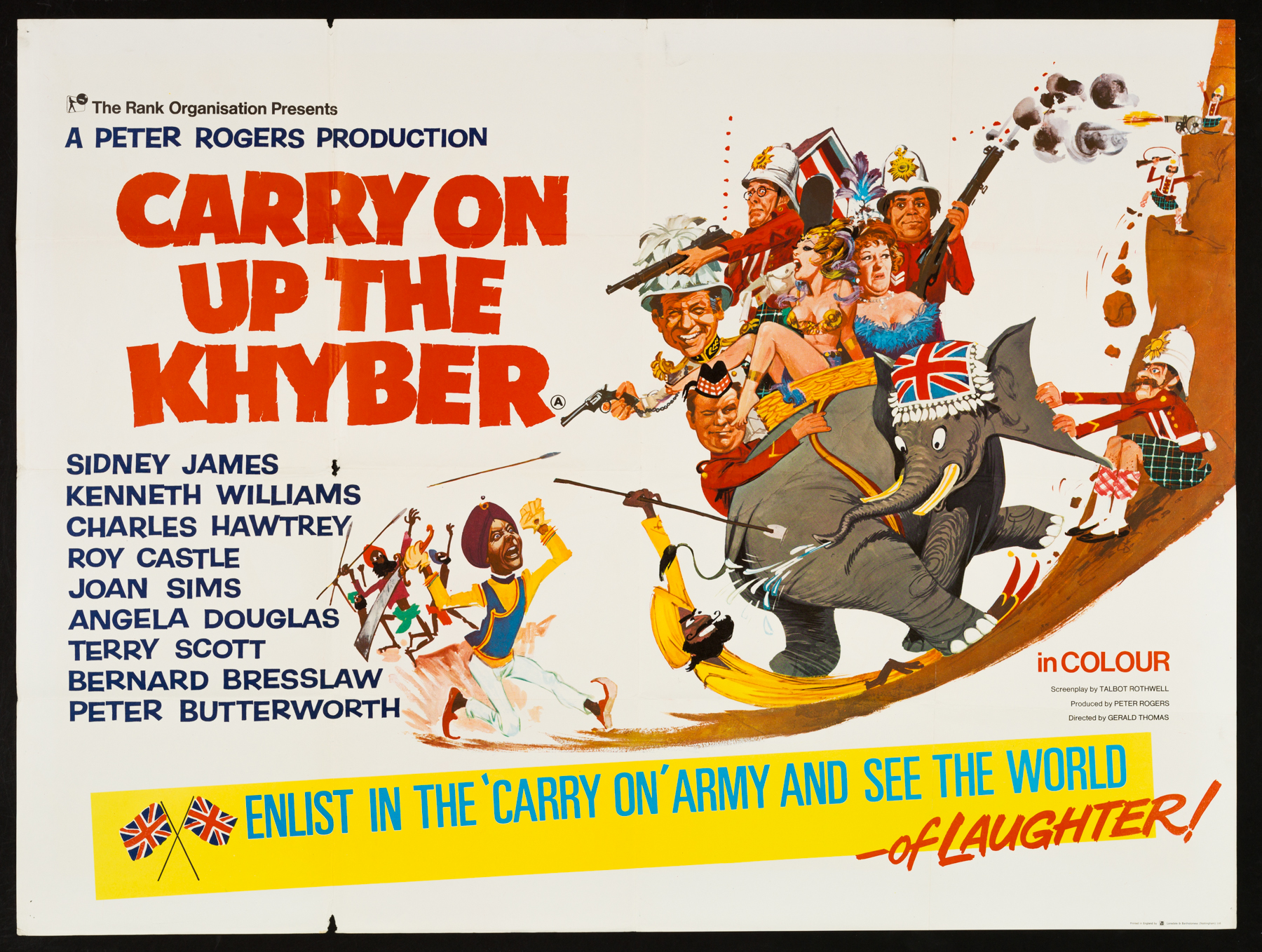
10 Interesting Facts and Figures About “Carry On Up the Khyber” (1968)
“Carry On Up the Khyber,” directed by Gerald Thomas, is a beloved British comedy film that stands out in the iconic “Carry On” series. Released in 1968, this film combines humor with a satirical take on British colonialism, serving up a mix of farcical situations and memorable characters. Here are ten intriguing facts and figures that highlight the charm and cultural impact of this classic film.
1. Part of the “Carry On” Series
“Carry On Up the Khyber” is the 21st installment in the “Carry On” film series, which began with “Carry On Sergeant” in 1958. The series is known for its innuendo-laden humor and slapstick comedy, making it a staple of British cinema.
2. A Star-Studded Cast
The film features a talented ensemble cast, including recognizable faces such as Sid James, Kenneth Williams, Joan Sims, and Peter Butterworth. Their performances contributed significantly to the film’s enduring popularity.
3. Box Office Success
Upon its release, “Carry On Up the Khyber” was a box office success, grossing over £1 million in the UK. It solidified the “Carry On” franchise as a major player in British film during the late 1960s.
4. Filming Locations
The movie was primarily filmed in Pinewood Studios in Buckinghamshire, England. Notably, the film’s exterior scenes were shot at the nearby Black Park, which provided the ideal backdrop for its fictional Himalayan setting.
5. Satirical Take on Colonialism
The film humorously critiques British colonial attitudes and the absurdity of imperialism. It portrays British soldiers as bumbling and incompetent, poking fun at the archetypes of heroism and bravery typically found in war films.
6. Iconic Catchphrases
“Carry On Up the Khyber” is known for its memorable catchphrases, particularly the phrase “It’s all in the best possible taste!” This phrase, delivered by Kenneth Williams, has since entered the lexicon of British comedy.
7. Costume and Set Design
The film’s elaborate costumes and set designs were integral to creating the film’s comedic tone. The production team invested significant effort in ensuring that the outfits were both authentic to the period and exaggerated for comedic effect.
8. Cultural References
The film is rich with cultural references, including nods to the British Raj and the genre’s various tropes. This adds layers of meaning for audiences familiar with the historical context, while still remaining accessible for general viewers.
9. Critical Reception
While the film was popular with audiences, it received mixed reviews from critics at the time of its release. Over the years, however, it has gained a cult following and is now regarded as one of the standout entries in the “Carry On” series.
10. Lasting Legacy
“Carry On Up the Khyber” has left an indelible mark on British pop culture. It continues to be screened on television and at film festivals, ensuring that new generations can enjoy its unique blend of humor and historical satire.
Conclusion
“Carry On Up the Khyber” remains a quintessential example of British comedy, combining slapstick humor with sharp commentary on societal norms. Its memorable characters, iconic phrases, and cultural critiques ensure that the film will be cherished for years to come. As part of the “Carry On” legacy, it provides both a nostalgic trip for long-time fans and an entertaining introduction for new viewers exploring the rich landscape of British cinema.
Discover more from Anglotees
Subscribe to get the latest posts sent to your email.
